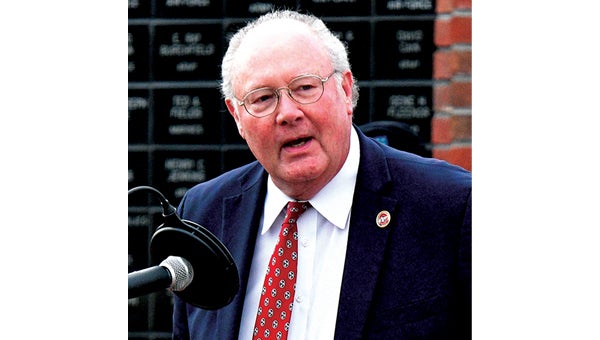County schools present Active Shooter program to the public
Published 7:24 pm Tuesday, February 27, 2018

- Star Photo/Abby Morris-Frye Jerry Stout, of the Tennessee Department of Homeland Security, speaks to attendees at an Active Shooter program presented by the Carter County School System.
More than 100 people attended a special program presented by the Carter County School System on Tuesday afternoon to learn more about active shooters.
“We want you to know how concerned we are,” said Carter County Board of Education Chairman Rusty Barnett as he welcomed the crowd at Hampton Elementary School. “We care very much about the safety of our students, teachers, and staff.”
Tuesday afternoon’s program was presented by Carter County BOE member Jerry Stout, who serves as the Supervisory Agent in the Bureau of Operations for the State of Tennessee Office of Homeland Security.
Stout said the program was scheduled weeks prior to the recent school shooting Florida, but incidents such as that make it all the more important to make sure people are aware of how to behave if they find themselves in an active shooter situation.
“We are no longer safe,” Stout said. “We’re not safe in schools. We’re not safe in church. We’re not safe at work. We’re not safe in public parks. And we’re not safe driving down the highways.”
Stout discussed some of the statistics surrounding active shooter incidents and other types of mass homicide attacks. According to statistics, 96 percent of active shooters are male and in about 74 percent of incidents the shooter had some personal relationship or connection with at least one of the victims.
“An active shooter is, in essence, an act of terrorism,” Stout said. “They don’t go out and accidentally kill 17 people. It’s an intentional act.”
According to Stout, the shooter in about 43 percent of incidents will point or fire their weapon at law enforcement officers to force a lethal response, something commonly referred to as “suicide by cop.” Another 40 percent of shooters will turn the gun on themselves during the incident.
“So now you have 83 percent of these active shooters who know going in that they are not coming out,” Stout said.
Over the years, the way officers have responded to these types of incidents has changed dramatically, Stout said, adding the most significant change in response procedures happened after the Columbine school shooting in 1999.
Prior to Columbine, the standard response had been for the first officers arriving at the location to create a secure perimeter around the scene and then wait for a Special Weapons And Tactics (SWAT) Team to arrive before moving in.
At the Columbine shooting, the SWAT Team had to respond from another county and took 28 minutes to arrive at the scene after the initial police response.
“For 25 of those 28 minutes, the officers on that perimeter could hear gunshots and kids inside dying,” Stout said. “Three minutes before SWAT arrived, the shooters Eric Harris and Dylan Klebold turned their guns on themselves. Kids died waiting on that SWAT Team.”
Now, Stout said, responding officers don���t wait for a SWAT Team. Instead, they go in and respond to the threat.
For those who find themselves in an active shooter situation, Stout said law enforcement promotes a simple plan of action: Run, Hide, Fight.
Fleeing the area is best if it can be done safely, Stout said. If you are unable to run, Stout said to find a place to hide and use whatever is available to barricade the door. If running and hiding are not options, Stout said to fight for your life, using whatever you can find to defend yourself.
Stout recommends not relying on a cell phone, as cell towers may become jammed with multiple people trying to place calls. If possible, use a landline to call 911 and give the dispatcher as much information as possible.
When officers arrive, Stout stressed showing open hands and obeying orders as the officers most likely will not know who specifically they are looking for and will be addressing any threat they encounter.




